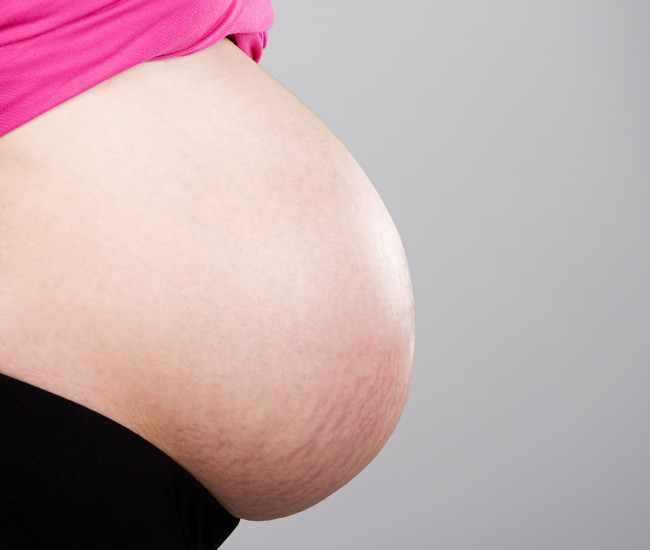Pregnancy stretch marks are the lines that may develop on the abdomen, as well as on other areas of the body during pregnancy. While they pose no risk to mom or baby, many women have concerns about their appearance.
What causes stretch marks?
Basically, the skin has insufficient time to adjust to the expanding movement of the body. The skin thus tears because the body expands faster than the skin covering it. The scar that forms from this tear is called a stretch mark.
Another cause (which is still subject to debate) involves the priming of the skin by increased levels of hormones. These hormones attract more water into the skin, which relaxes the bond between collagen fibres. This makes it easier for the skin to tear when it is stretched and for stretch marks to form.
When do stretch marks form?
Stretch marks generally become visible during the third trimester of pregnancy. But, some women will start to notice them as soon as their bumps start to grow.
Lighter-skinned women tend to develop pinkish stretchmarks while darker-skinned women’s stretch marks appear lighter than the surrounding skin.
Where do they form?
Most expecting women develop stretch marks on their bumps. However, it is also common to develop stretch marks on the breasts, thighs, hips, lower back and buttocks.
While they can appear anywhere, they are most likely to appear in places where larger amounts of fat are stored.
Preventing stretch marks
The best defence against stretch marks is to ensure that your skin maintains its maximum elasticity throughout pregnancy. To achieve this, you would need to keep skin well-hydrated and supple at all times.
Including foods that are rich in Vitamin E and C, Zinc and Silica, B2 and B3 in your pregnancy diet helps to form collagen. Collagen and elastin fibres in the skin are necessary to keep rapidly growing skin taut.
Exercise improves circulation, which keeps the skin elastic and more able to stretch as it grows.
In addition to ensuring that you keep your skin supple through eating the right foods and getting enough exercise, you should use a topically-applied product that is specifically formulated to maximise the skin’s elasticity. By applying a product from the first trimester twice daily throughout pregnancy, your skin will remain well-hydrated and better able to stretch.
About the Author: Bio-oil has been trusted by pregnant women since 1987. For more information, visit www.bio-oil.com
Latest posts by Contributor (see all)
- Video: Food allergies can cause your baby to be restless - June 27, 2014
- Boost your baby’s language skills with reading - June 27, 2014
- Top tips for your baby’s bedtime routine - June 27, 2014
-
No Comments" href="https://all4baby.co.za/pregnancy/conditions-complications/1003/pregnant-women-get-stretch-marks/">

Do all pregnant women get stretch marks?
-
No Comments" href="https://all4baby.co.za/pregnancy/pregnancy-symptoms/932/dehydration-pregnancy/">

Dehydration in pregnancy
-
No Comments" href="https://all4baby.co.za/pregnancy/first-trimester/256/noninvasive-genetic-test-pregnant-mothers-check-babys-health/">

Noninvasive genetic test for pregnant mothers to check for baby’s health


 Saving...
Saving...